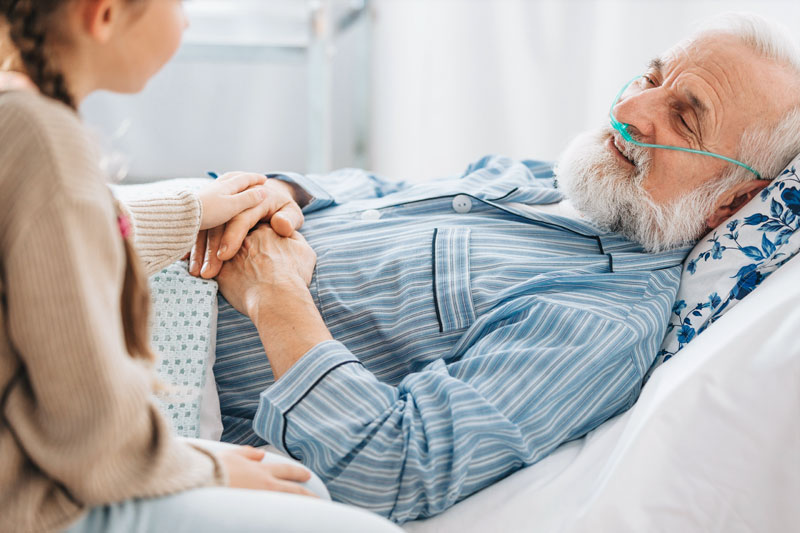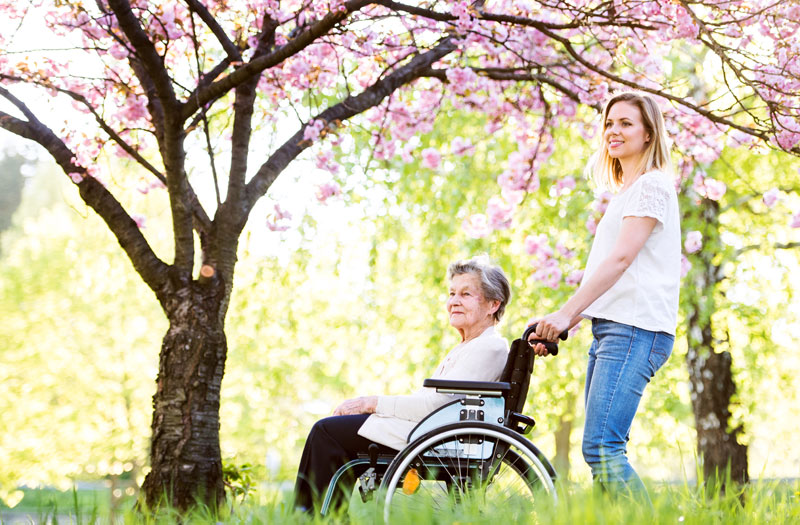CNAs (Certified Nursing Assistants), also referred to as Home Health Aides, have been called the unsung heroes of hospice care. Their role, as part of the hospice team, is crucial. Under the supervision of a RN (Registered Nurse), CNAs and Home Health Aides provide daily care to enhance a patient’s daily life, wellness and dignity – which includes essential and basic tasks, such as:
When caring for patients, care providers are concerned with patients’ physical needs as well as their emotional well-being. One way to improve a patient’s mood is to schedule a visit with a therapy pet. Whether it’s a cat, dog or a different animal altogether, pets can enter a room and immediately make it a brighter, happier place to be. A recent study reported that patients who spent 10 minutes with a therapy dog reported less pain than those getting conventional treatment alone.
While many hospice professionals focus on patients’ physical and psychological needs, spiritual care often rests with a highly skilled and compassionate member of the caregiving team: The chaplain.
As a hospice nurse, you know that you have a challenging and rewarding job. Helping people with quality care in the final stages of life is among the most important jobs of all. Not only can you support the person in need of care, but you can also provide comfort and happiness to friends and family members.
 Chuck Zimmerman sent us this beautiful gift of appreciation!
Chuck Zimmerman sent us this beautiful gift of appreciation!
Chuck Zimmerman is a local fiduciary in Tucson, AZ and Arista Home Health and Hospice has had the privilege of taking care of some of his clients over the past few years.
From the staff at Arista Healthcare,
Thank you, Chuck Zimmerman for the Edible Arrangement!
A question we hear regularly is “what are the Medicare qualifications, and do I qualify”.
Home health care includes a wide range of health and social services brought into your home to treat illness or injury. The complete services covered by Medicare’s home health benefit include skilled nursing care, therapy, and care provided by a home health aide. Depending on the circumstances, home health care will be covered by either Part A or Part B.
In hospice care, patients and their loves ones are often aware the end is near, but it does not make it any less difficult for family members to accept. Many friends and family, even nurses and caregivers, are afraid of saying the wrong thing. They do not want to make a bad impression or seem insensitive. However, the most important thing to remember is to be yourself. The end may be near, so now is the time to show how much you care.
Mindfulness, the act of focusing on being in the present, is sometimes thought of as a type of meditation. Recent studies show that practicing Mindfulness can be an effective strategy for home health care providers, including hospice patients, caregivers, and volunteers. By shifting the focus of hospice care away from states of emotional, mental, or physical distress – it can help reduce pain and anxiety. A growing number of hospice organizations are beginning to integrate these exercises into patient care and caregiver support.
The holidays are about spending time with and appreciating those closest to you, but anyone caring for patients knows that the holidays can also come with their share of grief for patients and caregivers alike. Here are some strategies to help make it through the holidays yourself – while also lifting the spirits of patients and their families.
There are similarities and differences between hospice and palliative care services. Both are meant to provide comfort and relief, but they differ in important ways. This infographic helps to explain the differences.








